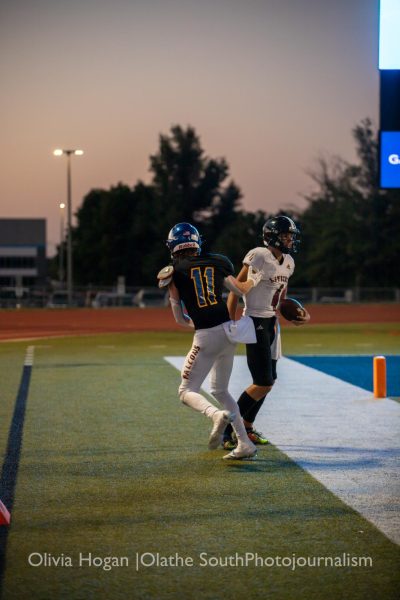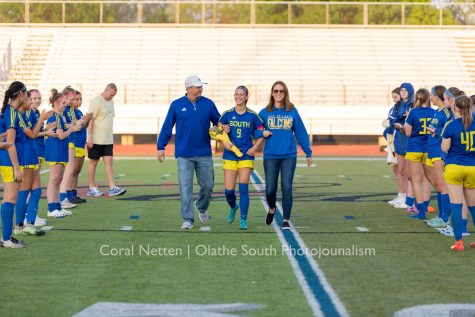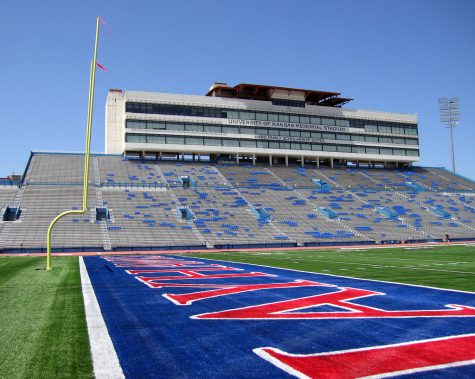Football team adapts for injuries
Adrian Garcia, senior, gets his leg checked by the athletic trainer at the football game against Shawnee Mission North on Oct. 20. Injured players go to physical therapy to stretch and strengthen muscles.
October 25, 2017
During the football season, many football players may suffer various kinds of injuries that can be hard to recover from.
For example, Cannon Gottschalk, junior, tore his anterior cruciate ligament (ACL) and tore his meniscus during a game against Olathe Northwest. The injuries will take six months to fully recover.
Despite his injury, Gottschalk still shows up to practice and supports his team. He does plan to play football next season.
The hardest thing about being injured is “not being able to play,” according to Gottschalk.
A few people have helped Gottschalk by carrying his backpack. He is also currently undergoing physical therapy, and during this time, he is focusing on working out his quad and strengthening his back.
Injuries can also affect a team as well and sometimes they are hard to overcome.
“Injuries always play a part in the season, but when your offense loses its star quarterback and the number one running back is hurt for the first five games, it is hard to overcome,” said Craig Lewis, football coach.
The team had to change “everything [they] have done all summer in order to play for our backups strengths.”
Lewis said that the other players are adapting well and fighting through a “tough situation.”
The offense was adjusted to complement the players that are available.
Another way injuries have impacted this football season is that the offense is spreading the ball “more than [they] would have if [their] quarterback was still playing,” according to Lewis.
“Injuries always give other kids a chance to rise to the occasion,” Lewis said.
As a result, modifications have been made to fit the talent level, which is why the ball is spreading more than it would be if the original starting quarterback was still playing.
Injured athletes going through physical therapy could be doing a variety of exercises that help stretch muscles and or strengthen them, such as pylometrics.
Jordin Brouhard, athletic trainer, said that athletes should know the difference between being injured or sore because it will allow athletes to know if they should seek medical attention.
“When athletes aren’t compliant, it can lead to longer recovery, or a constant reoccurrence of injury,” Brouhard said about why athletes should be completely compliant with their doctor or other physicians.
Another thing Brouhard stresses is that just because an athlete might feel better and able to perform certain activities, it does not mean that he is able to do said activities.
If an athlete is not cleared before he or she does something, he or she risks lengthening the recovery progress by making the existing injury worse or possibly having another separate injury.










